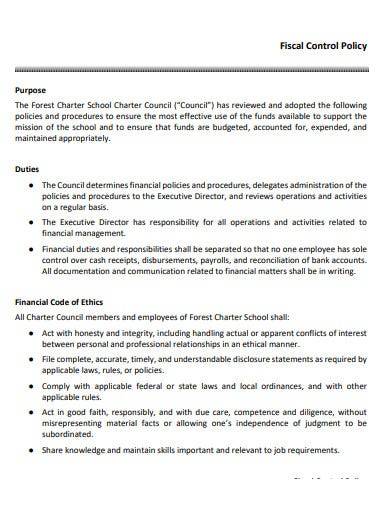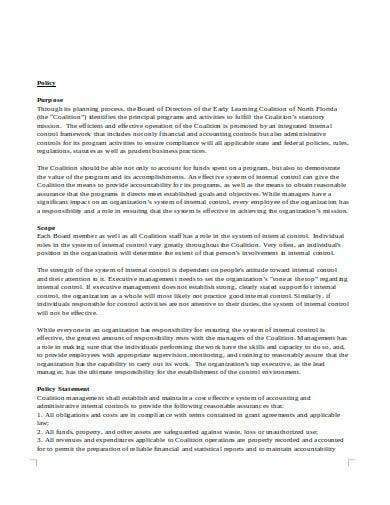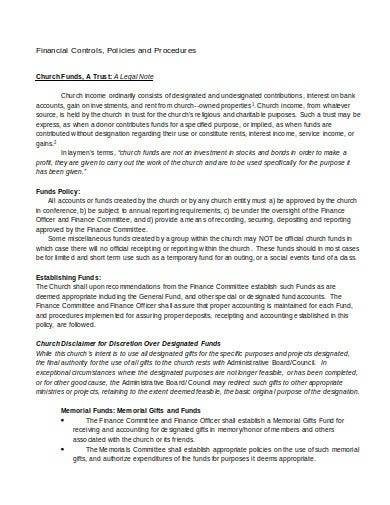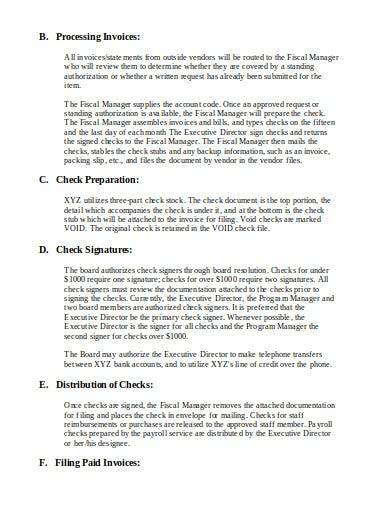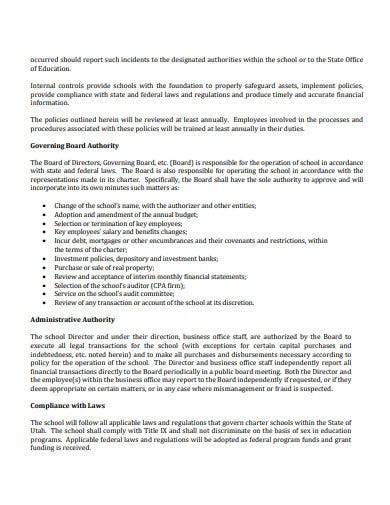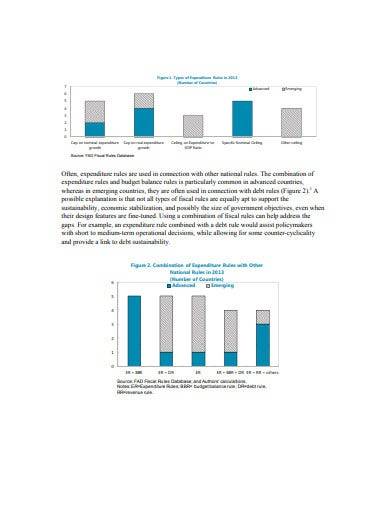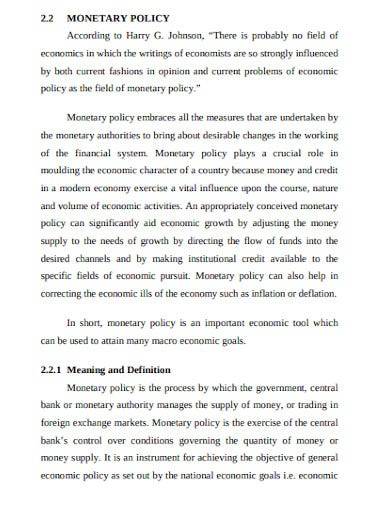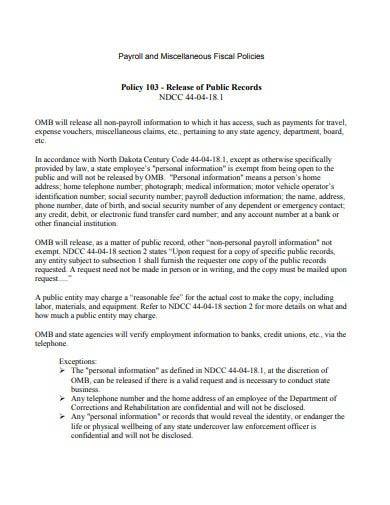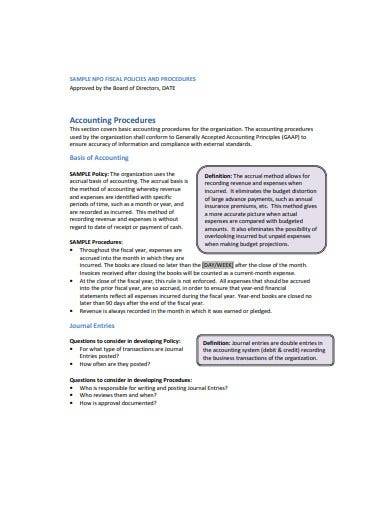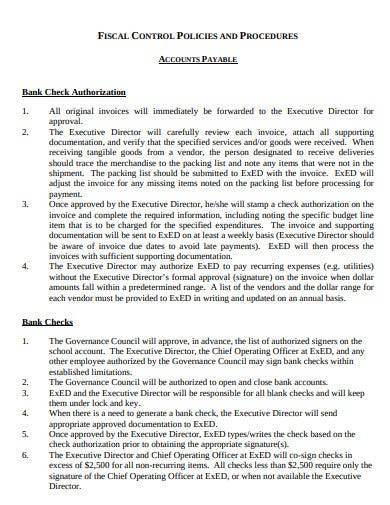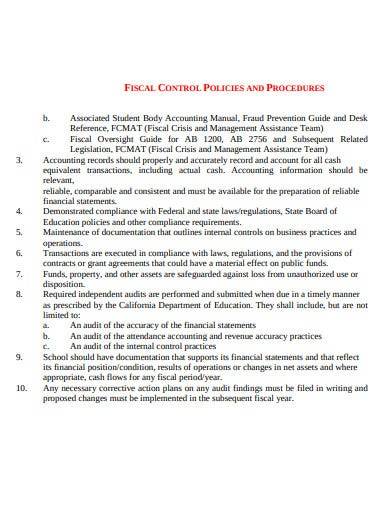Economic policies are strategic action plans that are intended to influence, affect, or take control over the behavior or movement of the economy. This type of policy is usually implemented and managed by the government and includes decision-making on certain government taxation and spending, redistribution of income from rich to poor, and decisions on the supply of money. Fiscal control is one of the economic policies that the government implements to avoid debt spending. This method prevents the government from borrowing funds which also lessens interest payments in the future. Some of the other types of policies include charity financial policy, cooperative policy, privacy policy, and more.
FREE 10+ Fiscal Control Policy Samples & Templates
1. Fiscal Control Policy Template
2. Sample Fiscal Control Policy
3. Financial Controls Policies and Procedures
4. Fiscal Control Policies Template
5. School Fiscal Control Policy Template
6. Sample Fiscal Control Policies
7. Sample Monetary Policy Template
8. Payroll and Miscellaneous Fiscal Policy
9. NGO Fiscal Control Policies and Procedures
10. Fiscal Control Policies and Procedures
11. Sample Fiscal Control Policies and Procedures
What is a Fiscal Control Policy?
There are two types of tools that policymakers use to influence the movement of the economy and these are monetary policy and fiscal policy. The fiscal control policy or fiscal policy is a policy tool that the government usually uses to encourage strong and sustainable growth of its economy and reduce overall poverty while the monetary policy is a set of tools that is used by a country’s national bank to take control over its entire money supply, promote growth in the economy, and employ strategic planning such as modifying interest rates and altering bank reserve requirements.
How to Create Fiscal Control Policy
Fiscal policy and monetary policy are commonly used together to influence the behavior or movement of a nation’s economy. Fiscal policy refers to the decisions made by the government to increase or decrease its taxation and spending methods. This policy, when used by companies, can affect its growth, ability to hire manpower, and tax management which they document using a policy template. It is also a complicated aspect of a nation’s economics as political parties might not come to a mutual agreement on the best path they’ll have to take to ensure the success of their country.
Step 1: Make Sure That the Fiscal Policy is Countercyclical
Fiscal policies can help to enable a seamless business cycle which is also known as the countercyclical policy. The countercyclical fiscal policy relies on automatic stabilizers in adjusting a company’s spending and revenue based on the status of the economy.
Step 2: Use Tax and Spending Measures to Support Economic Growth
Utilize measures on tax and spending to support the three long-term economic growth which is the capital, labor, and productivity.
Step 3: Promote Inclusion
Changes in technology and globalization are the main factors of convergence and growth between nations. With tax and public spending, countries can ensure that their growth is equally distributed among their people. A fiscal policy should also enable people to participate and adapt to their changing economy.
Step 4: Understand Risks and Adopt Strategies
With taxation, countries can have a stable and adjustable source of income that they can mobilize and use if necessary. This also determines whether a country can repay its debts or not. They can also recognize if they need to decrease the pace of accumulation of debt and lessen their financial burden or risks.
FAQs
How do fiscal policies affect economic factors?
Fiscal policies affect economic factors by changing the business tax policy which refers to the taxes paid by businesses to the government, government spending which increases demand, and individual taxes like income tax.
What are the types of fiscal policy?
There are two types of fiscal policy which are expansionary policy which is created to stimulate a nation’s economy and contractionary fiscal policy which is used to slow down economic growth and raise taxes to reduce spending.
How do fiscal policies affect businesses?
Some of the effects of fiscal policies on business include investment opportunities, slower growth, changes in taxation, and unemployment rates.
Fiscal policy and procedure refer to the ability of the government to decide whether to increase or decrease its taxation and spending. This policy is determined by both the executive and legislative branches of a government and utilizes to influence the behavior of the nation’s economy by changing its revenue and spending levels.
Related Posts
FREE 10+ Sample Financial Manager Job Description Templates in ...
FREE 15+ Company Financial Analysis Templates in PDF Excel
FREE 10+ Sample HR Confidentiality Agreement Templates in PDF ...
FREE 12+ Sample Financial Plan Templates in Google Docs MS ...
FREE 11+ General Ledger Samples & Templates in PDF MS Word
FREE 10+ Charity Budget Samples & Templates in MS Word PDF
FREE 9+ Quarterly Report Samples in PDF MS Word
FREE 13+ Liquidity Management Samples in PDF DOC
FREE 10+ Sample Senior Accountant Job Descriptions in MS Word ...
FREE 18+ Financial Audit Report Samples Templates in PDF MS ...
FREE How to Create a Financial Audit Report [10+ Samples]
FREE 13+ Financial Plan Samples in PDF MS Word | Excel ...
FREE 6+ Private Sector Assessment Samples in PDF
FREE 7+ Double Entry Bookkeeping Samples in MS Word PDF
FREE 11+ Audit Schedule Samples and Templates in PDF MS ...

